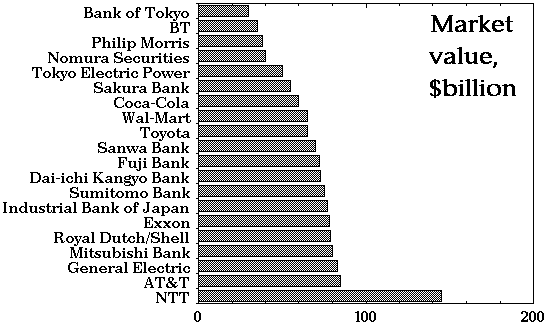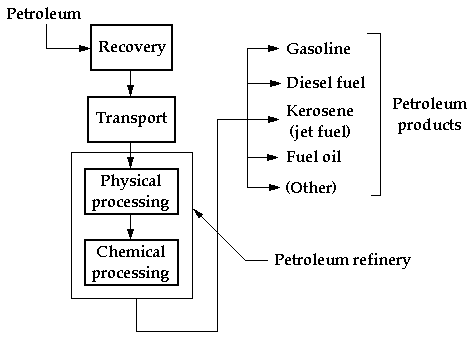
For a recent illustration of the importance of petroleum in international economics and politics, click here.
For a brief history of petroleum, click here.
Petroleum is a complex liquid mixture that contains hundreds of compounds. Compounds containing carbon and hydrogen only are the predominant ones (for example, octane); compounds that contain also some oxygen, sulfur and nitrogen are less abundant. Typical elemental analyses of crude oils are thus in the following range: 83-87% carbon, 11-16% hydrogen, 0-7% oxygen plus nitrogen, 0-4% sulfur.
Compounds containing only carbon and hydrogen in their molecular structure are desirable because they are responsible for the high heating value of petroleum. (Remember that the primary use of petroleum involves the conversion of its chemical energy to heat, with carbon and hydrogen in the various compounds being converted during combustion to carbon dioxide and water.) At the other extreme, compounds containing sulfur and nitrogen are bad news because during combustion they are converted to sulfur dioxide and nitrogen oxides, which are the precursors to acid rain.

Petroleum is not distributed democratically around the globe. Millions of years ago, as it was formed from decaying plant and animal material, particularly rich deposits were accumulated in the Persian Gulf area. (A typical oil well in Saudi Arabia produces 10,000 barrels per day; the average production of oil wells in the U.S. is about 15 barrels per day.)
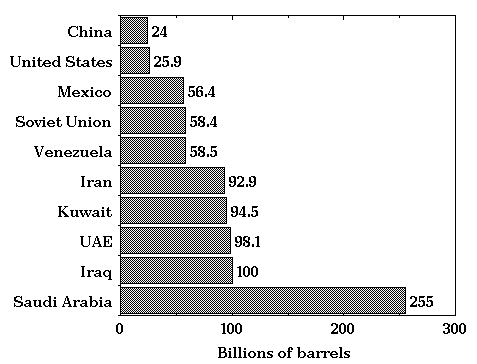
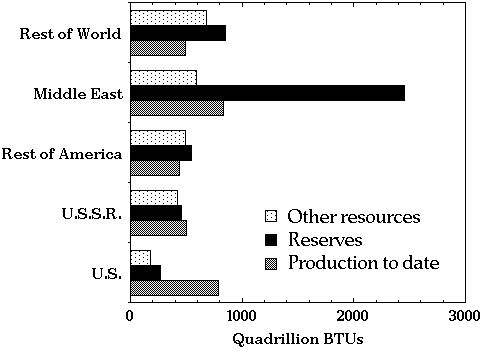
For the most recent press reports on world oil reserves, by countries, click here.
For the most recent press reports on world oil reserves, by regions, click here.
In primary recovery of oil, which relies on the natural reservoir pressure to squeeze out the oil from the porous rock, approximately 30% of the oil known to be in the reservoir is brought to the surface. Enhanced recovery methods must be used to recover more than that. Water or gas injection (secondary recovery) is used to increase the reservoir pressure. Steam injection (tertiary recovery) is typically used to reduce the viscosity of the remaining oil and thus further increase the amount that can be pumped out of the reservoir. These methods are not used routinely because they are expensive. When the price of oil increases, there is greater incentive to use them and thus increase, to some degree, the proven reserves of oil.
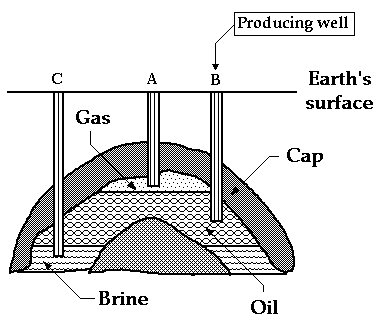
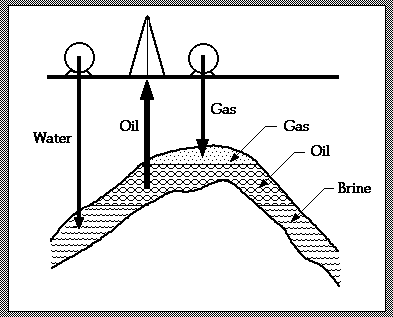

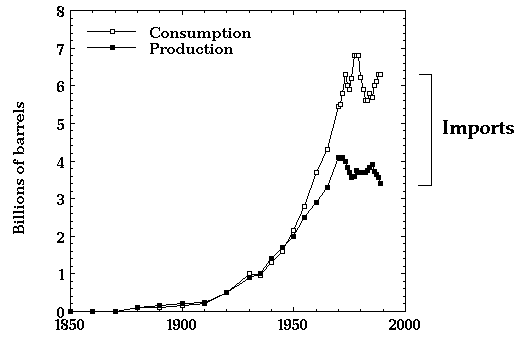
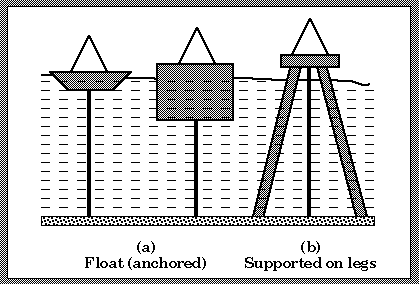
The tanker collided with a coral reef in the Prince William Sound and spilled a quarter of a million barrels of oil, which was to be transported to refineries from the port of Valdez (where the oil is brought by pipeline from the Prudhoe Bay fields).
Once the oil reaches a refinery (safely), it is processed into a multitude of products. Today, the principal products of an oil refinery are:

It is thus hardly surprising that among the top twenty companies in the world (based on market value), oil companies like Exxon and Shell rub shoulders with the big banking, computing and telecommunication conglomerates. Recent merger of Exxon and Mobil to create the world's largest corporation has aptly been called "history unmaking" (see The Age of 12/3/98, www.theage.com.au).
